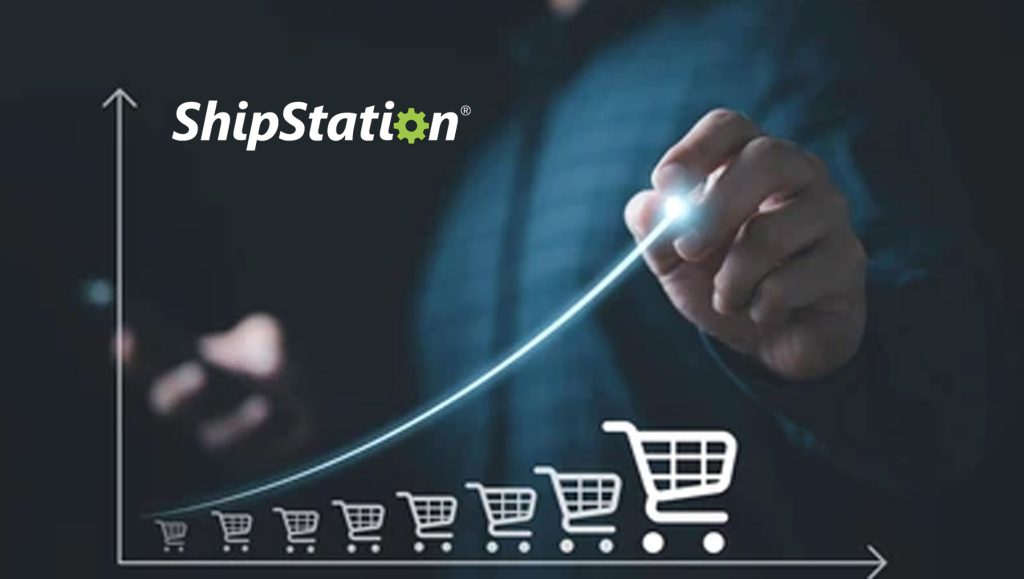Research from ShipStation and Retail Economics outlines the modern Australian consumer’s shopping journey, reveals new power behind social media and AI
In a fascinating shift, new research reveals that physical interactions throughout the customer journey contribute significantly to Australian ecommerce sales. ShipStation and Retail Economics found that $15 billion – nearly half (48%) – of Australian online non-food sales in 2023 interacted with physical touchpoints. This highlights the growing importance of omnichannel strategies that seamlessly blend online and offline experiences.
The Ecommerce Delivery Benchmark Report 2024, commissioned by ShipStation’s parent company, Auctane, in partnership with Retail Economics, surveyed 8,000 consumers and 800+ online sellers across eight markets1.
While familiar aspects like in-store browsing and returns play a critical role in the omnichannel experience, the research delves deeper, revealing the rising influence of social media and AI in the shopping journey.
David Boyer, VP, Head of ANZ at Auctane, ShipStation’s parent company:
“The $15 billion figure paints a compelling picture of consumer behaviour, presenting a significant opportunity for brands to evolve their approach.
“Gone are the days of rigid classifications like ‘online’ or ‘offline’ shopping. Today’s informed consumer seamlessly navigates physical touchpoints like brick-and-mortar stores, social media discovery channels, and even embraces innovative solutions like AI-powered assistants to streamline tedious tasks like delivery and product research. This omnichannel journey is not merely a matter of convenience, but rather an opportunity to forge personalised connections that build enduring brand loyalty.”
Social Media Overtakes Websites for Product Discovery Among Digital Natives
Forget retailer websites – for Gen Z and Millennials, platforms like TikTok and Instagram reign supreme for product discovery. Across surveyed markets, nearly 40% of digital natives (under 45) rely on social media for inspiration and product research, compared to just 35% who use retail websites. This emphasises the need for retailers to adapt their strategies and reach these audiences on their preferred platforms.
AI: A Glimpse into the Future of Customer Convenience
The rise of artificial intelligence (AI) promises to revolutionise shopping. While some Australian consumers remain cautious, 31% surveyed see AI as valuable for streamlining order and delivery updates, and 28% believe it can simplify product research. This suggests a growing openness to AI’s potential for enhancing the shopping experience. However, for retailers, clear communication and responsible implementation are crucial for building trust and ensuring AI is used effectively.
Read More: Syte Pioneers Generative AI-Powered Styling and Merchandising Solutions for Retailers
Other key findings include:
Cost-Conscious Consumers: Striking a Balance in Delivery
While physical interactions, social media, and seamless logistics drive online sales, cost sensitivity remains paramount for surveyed Australian consumers, especially around delivery. A significant 48% state the cost of delivery is the most important factor to them when shopping online. The report further showcases the impact of high shipping costs: 71% of surveyed Australian consumers are less likely to shop with a brand due to them, while 44% are unwilling to pay for premium deliveries. Navigating this delicate balance between cost optimisation and customer satisfaction will be crucial for retailers in the year ahead.
Returns: From Friction Point to Loyalty Catalyst
Consumers are expressing significant desire for out-of-home returns. 31% of surveyed Australian consumers report a preference for in-store returns and 21% favour PUDO (pick-up/drop-off) locations. The research also reveals a distinct generational divide in the frequency of returns: across markets, Gen Z leads the pack, returning 19% of their apparel purchases on average.
While the debate around free returns persists, 65% of surveyed Australian consumers believe they should be free and not have any associated costs. Notably, across surveyed markets, half of Gen Zs are willing to pay for a quick and hassle-free return, making them three times more likely than Boomers (aged 65+) to do so. Ultimately, returns present a double-edged sword: 40% of surveyed Australian consumers report an inconvenient returns policy as a factor that would make them less likely to shop with a brand in the future. By embracing diverse, in-person return options, adopting a delivery ecosystem to address rising returns, and prioritising transparent policies, retailers can transform this potential churn point into a powerful customer retention tool.
Beyond Inflation: Navigating Retailer Challenges in 2024
Despite easing inflationary pressures, surveyed merchants cited a trio of concerns heading into 2024: rising overhead costs (37%), weak customer demand (31%), and intense competition (27%). In this dynamic landscape, in order to outshine the competition brands should seek to orchestrate a more frictionless customer journey.
Richard Lim, CEO of Retail Economics:
“The retail landscape has demonstrably shifted towards a unified, omnichannel strategy in 2024. The $15 billion figure spent online that is heavily influenced by physical touchpoints underscores the dynamic and multi-faceted nature of the modern customer journey. Convenience and value are paramount across all channels, from product discovery to delivery and returns, leaving no room for friction in the experience.
“Retailers must understand this evolution and prioritise seamless, consistent customer experiences – regardless of whether customers choose online, in-store, or a hybrid approach. Single-channel strategies struggle to maintain relevance in this fluid environment. Embracing a unified, omnichannel approach unlocks the potential for lasting customer loyalty and reinforces brand relevance in the competitive landscape.”
For additional findings and recommended holiday strategies for merchants, download The Ecommerce Delivery Benchmark Report 2024 today.






















